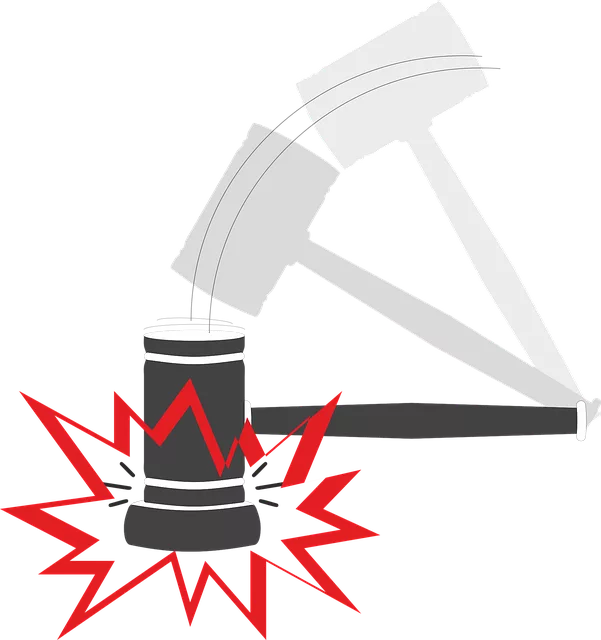Category: Aurora Workers’ Compensation
Aurora Workers’ Compensation: Revolutionizing Labor Protections and Support
Introduction
In today’s dynamic global economy, ensuring the well-being and security of workers is more critical than ever. Aurora Workers’ Compensation (AWC) emerges as a groundbreaking concept, offering a comprehensive framework to protect laborers across various sectors. This article aims to provide an in-depth exploration of AWC, its mechanisms, impact, and potential to shape a safer and fairer work environment. By delving into its historical roots, global reach, economic implications, technological integrations, and future prospects, we will uncover the multifaceted role it plays in modern labor management.
Understanding Aurora Workers’ Compensation
Definition and Core Components
Aurora Workers’ Compensation (AWC) is a revolutionary system designed to provide financial support and healthcare coverage to employees who sustain injuries or contract illnesses related to their work. It operates as an insurance mechanism, ensuring that workers receive adequate reimbursement for medical expenses, lost wages, and rehabilitation services without the need for lengthy legal battles. The core elements of AWC include:
- Comprehensive Coverage: AWC covers a wide range of workplace accidents and occupational diseases, from physical injuries to mental health conditions arising from work-related stress.
- Rapid Claims Processing: The system is structured to streamline the claims process, ensuring prompt financial assistance and medical treatment for affected workers.
- Employer Participation: Employers are required to enroll in AWC, contributing to a centralized fund that finances claims and supports worker recovery.
- Employee Benefits: Eligible employees receive benefits without discrimination, fostering a culture of trust and mutual support.
Historical Context and Evolution
The concept of workers’ compensation has its roots in the late 19th century when industrial revolutions across Europe and North America brought widespread labor concerns to the forefront. Traditional common law systems proved inadequate in addressing the unique challenges of industrial work, leading to the development of workers’ compensation laws. Over time, these laws evolved to include more comprehensive coverage and stricter liability rules for employers.
In its early forms, workers’ compensation was often adversarial, with employees fighting legal battles against employers. This system was inefficient and left many workers with inadequate support. AWC builds upon historical lessons, aiming to streamline processes, enhance employee rights, and foster collaborative relationships between employers and workers.
Global Impact and Trends
International Influence
Aurora Workers’ Compensation has gained significant traction internationally, with numerous countries recognizing its potential to improve labor conditions and reduce social costs. The concept has been particularly influential in regions with diverse economic landscapes, such as:
- Emerging Markets: Countries like India and Brazil have adopted AWC-inspired models to address the growing informal sector workforce, providing them with much-needed protection.
- Developed Economies: European nations and North American states have implemented robust AWC systems, serving as models for global best practices. For instance, Germany’s comprehensive social security system includes a strong workers’ compensation component.
- Asia-Pacific Region: Countries like Japan and Australia have integrated AWC principles into their existing welfare systems, ensuring comprehensive worker support.
Key Trends Shaping AWC
Several trends are currently shaping the evolution of Aurora Workers’ Compensation globally:
- Digitalization: The integration of technology in AWC systems is revolutionizing claims processing, allowing for real-time updates, remote consultations, and efficient data management.
- Telemedicine: With the rise of remote work and distributed teams, telemedicine has become an essential component of AWC, providing workers with accessible healthcare services regardless of their location.
- Mental Health Support: Growing awareness of mental health issues in the workplace has led to expanded AWC benefits, including counseling services and stress management programs.
- Data Analytics: Advanced analytics enables employers and policymakers to identify risk factors, design more effective safety protocols, and predict potential trends in work-related injuries.
Economic Considerations
Market Dynamics and Investment Patterns
The implementation of Aurora Workers’ Compensation has significant economic implications, influencing both the public and private sectors:
- Reduced Social Costs: By providing immediate financial support and healthcare, AWC can decrease long-term social welfare expenses, freeing up government resources for other initiatives.
- Employer Investments: Employers contribute to the AWC fund, which acts as a form of insurance, protecting them from substantial legal liabilities in case of worker injuries or illnesses. This encourages employers to prioritize workplace safety.
- Private Sector Engagement: Private insurance companies often collaborate with AWC systems, offering specialized services and contributing expertise in risk management and claims processing.
Role in Economic Systems
AWC plays a critical role in fostering economic growth and stability:
- Attracting Investments: Countries with robust AWC systems tend to attract foreign investments due to their demonstrated commitment to worker welfare, creating a positive business environment.
- Reduced Turnover: Improved employee satisfaction and support through AWC can lead to lower turnover rates, benefiting businesses over time.
- Productivity Gains: Healthy and motivated workers contribute to increased productivity, further strengthening economic performance.
Technological Advancements
Digital Transformation of AWC
Technology has been instrumental in transforming Aurora Workers’ Compensation into a more efficient, accessible, and effective system:
- Online Claims Portals: Employees can now file claims and access benefits information through user-friendly online platforms, eliminating the need for extensive paperwork.
- Mobile Applications: Mobile apps enable workers to receive updates, connect with healthcare providers, and manage their benefits on the go.
- Blockchain Integration: Blockchain technology ensures secure and transparent record-keeping, streamlining the verification process for claims and reducing fraud.
- AI-Powered Risk Assessment: Artificial intelligence algorithms analyze historical data to predict workplace hazards, helping employers implement proactive safety measures.
Emerging Technologies
Several emerging technologies are poised to further enhance AWC:
- Wearable Devices: Smartwear with built-in sensors can monitor worker health and safety in real time, providing early warnings for potential risks.
- Augmented Reality (AR) Training: AR technology offers immersive training experiences, teaching employees safe work practices and emergency response protocols.
- Robotic Process Automation (RPA): RPA can automate repetitive tasks in claims processing, improving efficiency and reducing human error.
Benefits and Challenges
Advantages of AWC
- Enhanced Worker Safety: By incentivizing employers to prioritize safety and providing immediate financial support, AWC encourages a culture of workplace wellness.
- Improved Access to Healthcare: Digital tools and telemedicine ensure that workers, especially those in remote areas or with limited mobility, can access healthcare services conveniently.
- Reduced Stigma: AWC promotes the idea that seeking help is not a sign of weakness but rather an essential aspect of employee well-being.
- Business Continuity: In the event of workplace accidents, AWC ensures that businesses can maintain operations while focusing on worker recovery.
Challenges and Considerations
- Funding Sustainability: Ensuring adequate funding for AWC funds is crucial, especially in industries with high risk or low profit margins.
- Employer Compliance: Encouraging full employer participation and compliance with AWC regulations remains a challenge in some regions.
- Benefit Distribution Efficiency: As the system grows, optimizing benefit distribution to ensure fairness and timeliness becomes increasingly important.
- Privacy Concerns: Handling sensitive worker data requires robust security measures to protect privacy.
Future Prospects and Recommendations
Predictive Analytics and Proactive Safety
The future of Aurora Workers’ Compensation lies in leveraging advanced analytics and technology for proactive risk management. By predicting workplace hazards and implementing targeted safety measures, AWC can further reduce the frequency and severity of work-related injuries.
Collaborative Approach
Policymakers, employers, and workers should collaborate to enhance AWC systems:
- Employer Engagement: Encouraging employer involvement in designing and improving AWC policies ensures a more tailored approach to specific industry needs.
- Worker Feedback: Actively seeking input from employees can help identify gaps and areas for improvement in the system.
- Public-Private Partnerships: Collaborating with private sector entities, including insurance companies and technology providers, can drive innovation and efficiency.
Global Standardization
Given its global impact, AWC has the potential to become a universal standard for worker compensation. International cooperation and knowledge sharing can lead to the development of best practices, ensuring consistent and high-quality care for workers worldwide.
Conclusion
Aurora Workers’ Compensation represents a significant step forward in labor management, offering a comprehensive, technology-driven solution to support employees and protect employers. Its global reach and positive impact on economic systems and worker welfare make it a model worth emulating. As AWC continues to evolve, embracing technological advancements, fostering collaboration, and ensuring adequate funding will be crucial to maintaining its effectiveness and sustaining a safer, more inclusive work environment.
Maximize Compensation: Top Aurora Motorcycle Accident Lawyers – Free Consultation, Expert Advocates for Workers’ Comp Claims
Save Time & Money: Aurora’s Top Legal Experts Simplify Property Deals

Navigating the complex world of real estate in Aurora can be a daunting task, but with our expert le…….
Aurora’s Top Lawyer: Free Consultation, End Landlord-Tenant Disputes, Save Now!
Aurora’s Top Mediator: Amicable Divorces, Save Time & Money

Tired of the high costs and emotional toll of traditional divorce in Aurora? Our Family Law Mediatio…….
Aurora’s Top DUI Lawyer: Beat Charges, Keep Your License, Save Money
Free Legal Aid for Aurora Minors: Save on Compensation & Justice

Facing legal troubles as a minor in Aurora can be daunting, with potential outcomes that could affec…….
Save Thousands: Free Consult on Aurora Workers’ Comp Tax Strategies
Maximize Your Estate: Expert Aurora Probate & Trust Lawyer – Streamline Now!
Aurora’s Top Lawyer: Free Consultations for Easy Tenant Rights & Savings

Struggling with a landlord-tenant dispute in Aurora? Our law firm offers a free consultation, guidin…….













